Bird Watching as Meditation - Mindfulness in Nature
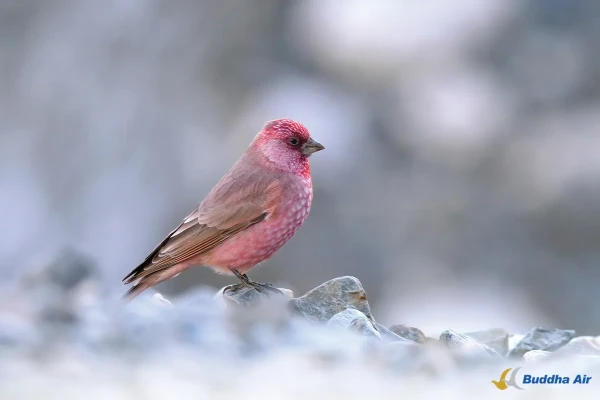
Birds are beautiful to watch, and their melodious chirping brings joy to the mind. Observing their behavior—especially their struggle for survival and love for their chicks—can be deeply inspiring. It teaches us to be hopeful and resilient in life.
Time away from a busy routine to wander along rivers, lakes, villages, or forests refreshes the mind. Even with a glance, watching birds can feel as calming and enriching as meditation. It helps relieve stress. That's why I study and observe birds.
I am passionate about bird watching and love learning about new bird species. Nepal is home to around 900 bird species, and I've observed and studied over 500 of them. I've also photographed many of these birds.
Most birds are small, quick, and playful, making photographing difficult. Bird photography demands patience, dedication, and the proper techniques. Capturing them without disturbing their natural behavior is essential.
Many birds can still be seen in our home gardens, but their numbers are declining due to modernization and unchecked human construction. Habitat loss, scarcity of food, and noise and light pollution are pushing many species toward extinction.
Wildlife photography is easier now than it was in the past. When I began, the cameras and lenses were slow. Today, a decent camera and lens setup can be purchased for around NPR 400,000. Earlier, identifying birds required consulting books; now, a mobile app can instantly provide information by scanning a photo.
I especially enjoy action photography, so I love capturing birds in flight. Through wildlife photography, I've developed a deep sense of responsibility toward conservation.
1. Blue-throated Barbet
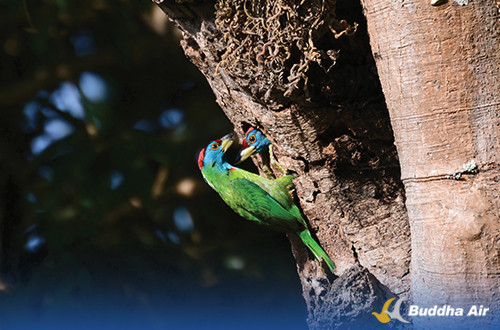
One of my first bird photos was of the Blue-throated Barbet near Adeshwar Temple in Sitapaila. This bird sparked my interest in wildlife photography. It is typically found in forests between 1,300 and 2,100 meters in elevation.
2. Greylag Goose
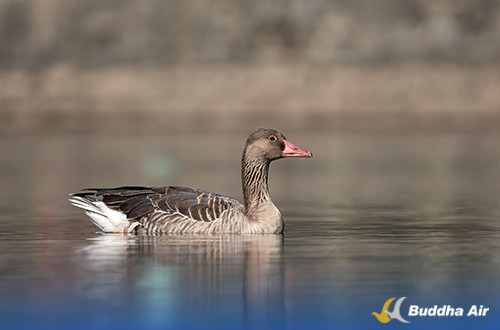
Originally from Europe, this bird is rarely seen in Kathmandu. I photographed it at Taudaha. It appeared near the Bagmati River around 8 AM and would visit Taudaha to feed and dive. Later, I discovered it was injured—likely during its journey from abroad. It stayed at the lake's edge until it recovered and flew back to its original destination.
3. Ibisbill
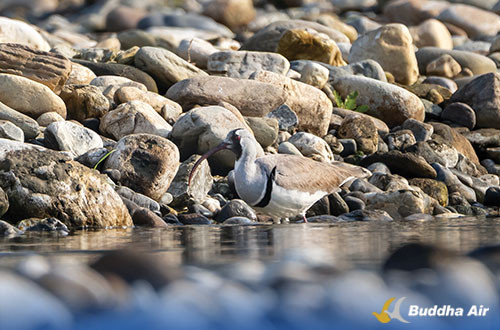
Known locally as the tilhari bird due to the necklace-like marking around its neck, this bird is seen in winter below the Samari Bridge in Hetauda. White in color, it blends easily with stones, making it hard for predators to spot. It feeds on insects and fish and migrates to the Himalayas after winter.
4. Sarus
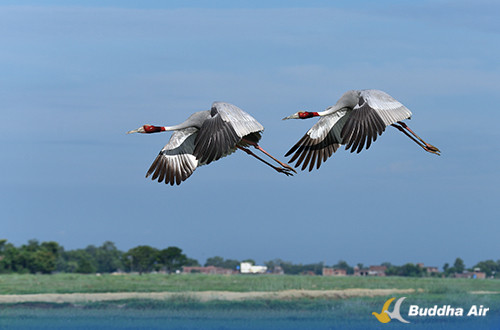
Commonly found in the Terai fields, the Sarus is the world's tallest flying bird, at around 156 cm. It feeds on grains, small mammals, insects, fish, frogs, and bird eggs. I captured this image in Lumbini, which also has a Sarus conservation area. A religious tale tells of Gautam Buddha once saving a Sarus, deepening its cultural significance.
5. Green Bee-eater
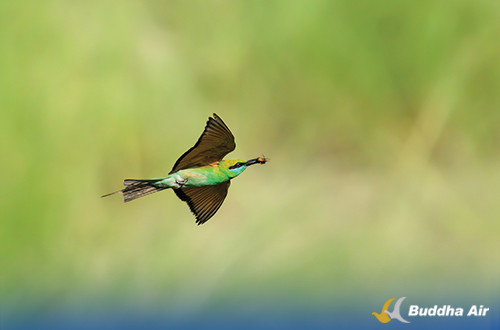
Also called the murlai bird, this grassland species measures 16–18 cm and lives below 620 meters in elevation. It hunts bees and insects mid-flight and also feeds on butterflies and grasshoppers. I photographed it in Bardiya.
6. Spotted Owlet
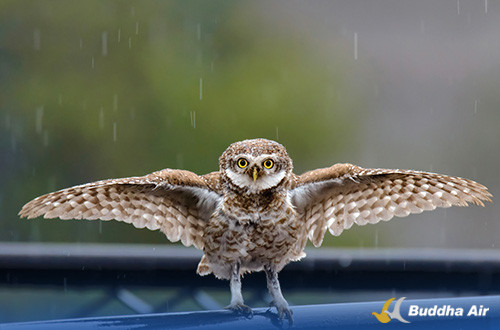
These owls live near forests and human settlements, often nesting in rooftops or tree hollows. Both males and females have similar spotted plumage, making it hard to distinguish between them. One unique trait is their silent flight. Their main prey include mice and small snakes. I took this photo outside my house in Bijeshwari, Kathmandu.
7. Himalayan Monal (Danphe)
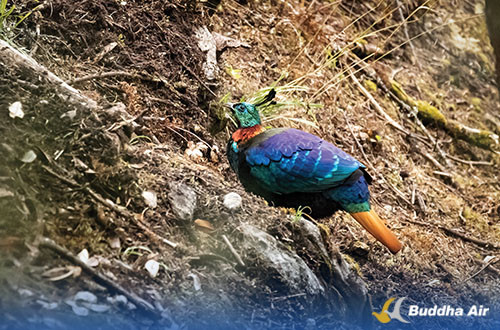
The danphe, Nepal's national bird, lives in the Himalayan regions 2,100 and 4,500 meters. The male is vibrantly colored, while the female looks more muted. It feeds on grass, seeds, berries, and insects. I photographed this bird in Namche, Solukhumbu.
8. Great Cormorant (Jaleba)
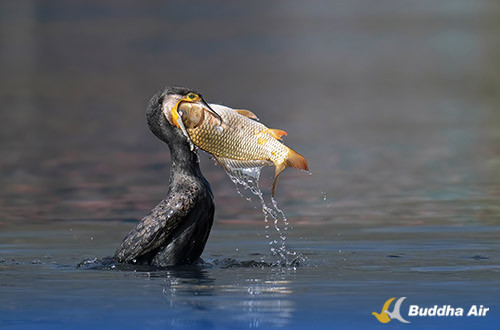
This migratory bird is often seen in Taudaha during winter, where it feels safe. It swims to hunt fish. However, since the fish in Taudaha are large, feeding has become challenging. In the image, the bird struggles to swallow a fish it caught but eventually gives up.
9. Bearded Vulture (Lammergeier)
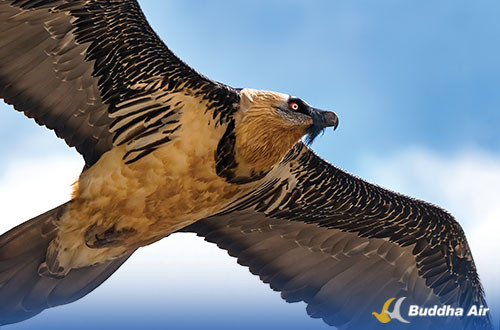
Vultures are critically endangered worldwide. Nepal is home to nine species. As nature’s scavengers, they feed on animal carcasses and have strong digestive systems. Bearded vultures, named for their facial hair-like feathers, are known to hunt birds in flight and drop them down to eat. I captured this photo in the Everest region.
You may also like: Natures Sweeper - Essential Role of Vultures in Ecosystem
10. Jungle Myna
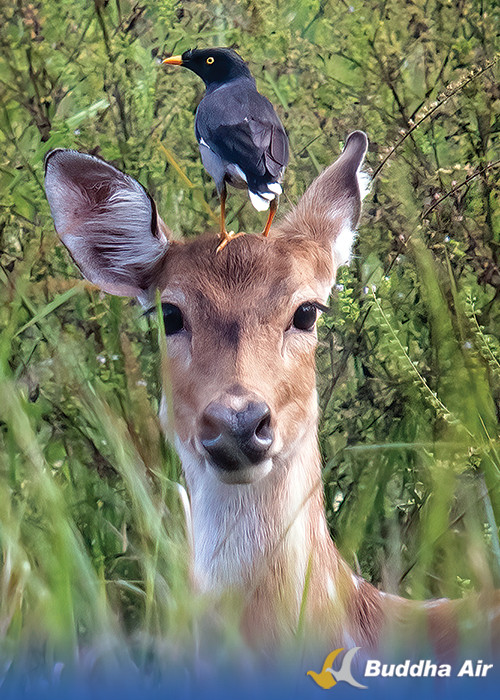 This image shows a Jungle Myna perched on a deer in Chitwan National Park. I took this shot one evening as the bird landed on the deer unexpectedly. Jungle Mynas are commonly found near human habitats, typically in pairs or flocks, between 75 and 1,500 meters in elevation.
This image shows a Jungle Myna perched on a deer in Chitwan National Park. I took this shot one evening as the bird landed on the deer unexpectedly. Jungle Mynas are commonly found near human habitats, typically in pairs or flocks, between 75 and 1,500 meters in elevation.
About the Photographer
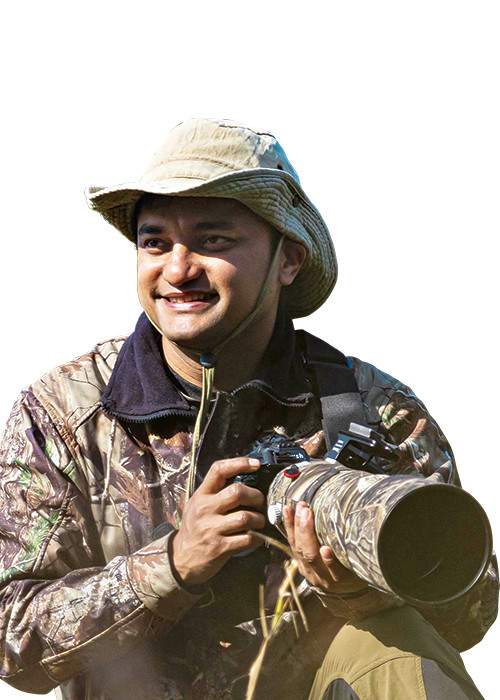
Ayush Man Kayastha is a professional photographer specializing in event, studio, wedding, portrait, and commercial photography. However, his true passion is wildlife photography.
Born in Chhetrapati, Kathmandu, Ayush began photography at age nine. He is the fourth generation in this field and continues a long family tradition.
Since 2012, he has focused intensively on wildlife photography, primarily photographing birds, tigers, and deer. His work has taken him across Chitwan, Bardiya, Parsa, and Kathmandu, as well as to India’s Bandhavgarh and Keoladeo National Park.
His studies have connected him with several conservationists, including a rare opportunity to photograph Bardiya alongside world-renowned chimpanzee researcher Jane Goodall.
Ayush believes wildlife conservation should be taught from an early age in school. “I am spreading the message of bird conservation through photography,” says Ayush. “Let’s not keep birds in cages or harm their habitats. Let’s join hands in conservation starting today.”
He also notes the economic challenges of wildlife photography in Nepal. "People often ask for my photos for free despite the immense effort behind them. Still, I find more satisfaction in this work than in any financial gain."
Best wishes to the passionate and courageous photographer Ayush Man Kayastha, who continues to spread the message of love for nature through his lens.
